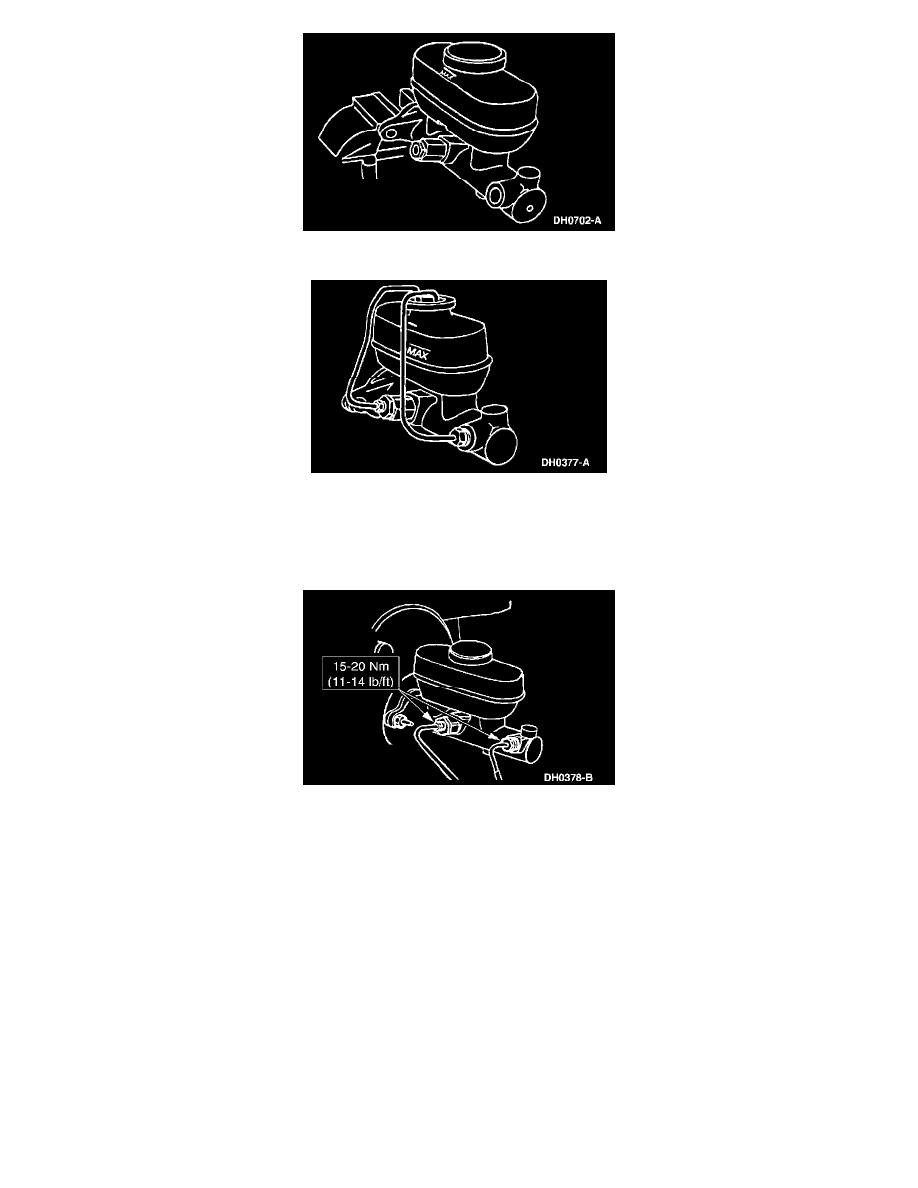F 150 Heritage 4WD Pickup V6-4.2L VIN 2 (2004)

2. For bench priming, mount the brake master cylinder in a vise.
3. install short brake tubes with the ends submerged in the brake master cylinder reservoir, and fill the brake master cylinder reservoir with High
Performance DOT 3 Brake Fluid C6AZ-19542-AB or equivalent DOT 3 fluid meeting Ford specification ESA-M6C25-A. If DOT 3 is not
available use DOT 4 Brake Fluid meeting Ford specification SAE-J1704-DOT 4.
4. Have an assistant pump the brake pedal , or slowly depress the primary piston until clear fluid flows from both brake tubes, without air bubbles.
5. If the brake master cylinder has been primed at the bench, install it in the vehicle.
6. Remove the short brake tubes, and install the brake outlet tubes.
7. Bleed each brake tube at the brake master cylinder as follows:
1
Have an assistant pump the brake pedal, and then hold firm pressure on the brake pedal.
2
Loosen the rearmost brake tube fittings until a stream of brake fluid comes out. While the assistant maintains pressure on the brake pedal,
tighten the brake tube fitting.
3
Repeat this operation until clear, bubble-free fluid comes out.
4
Refill the brake master cylinder reservoir as necessary. Repeat the bleeding operation at the front brake tube.
Four Wheel Anti-Lock Brake System (4WABS) Hydraulic Control Unit (HCU)
WARNING: Use of any other than approved DOT 3 brake fluid will cause permanent damage to brake components and will render the
brakes inoperative.
WARNING: Brake fluid contains polyglycol ethers and polyglycols. Avoid contact with eyes. Wash hands thoroughly after handling. If brake
fluid contacts eyes, flush eyes with running water for 15 minutes. Get medical attention if irritation persists. If taken internally, drink water
and induce vomiting. Get medical attention immediately.
CAUTION: Brake fluid is harmful to painted or plastic surfaces. If brake fluid is spilled onto a painted or plastic surface, immediately wash it with
water.
